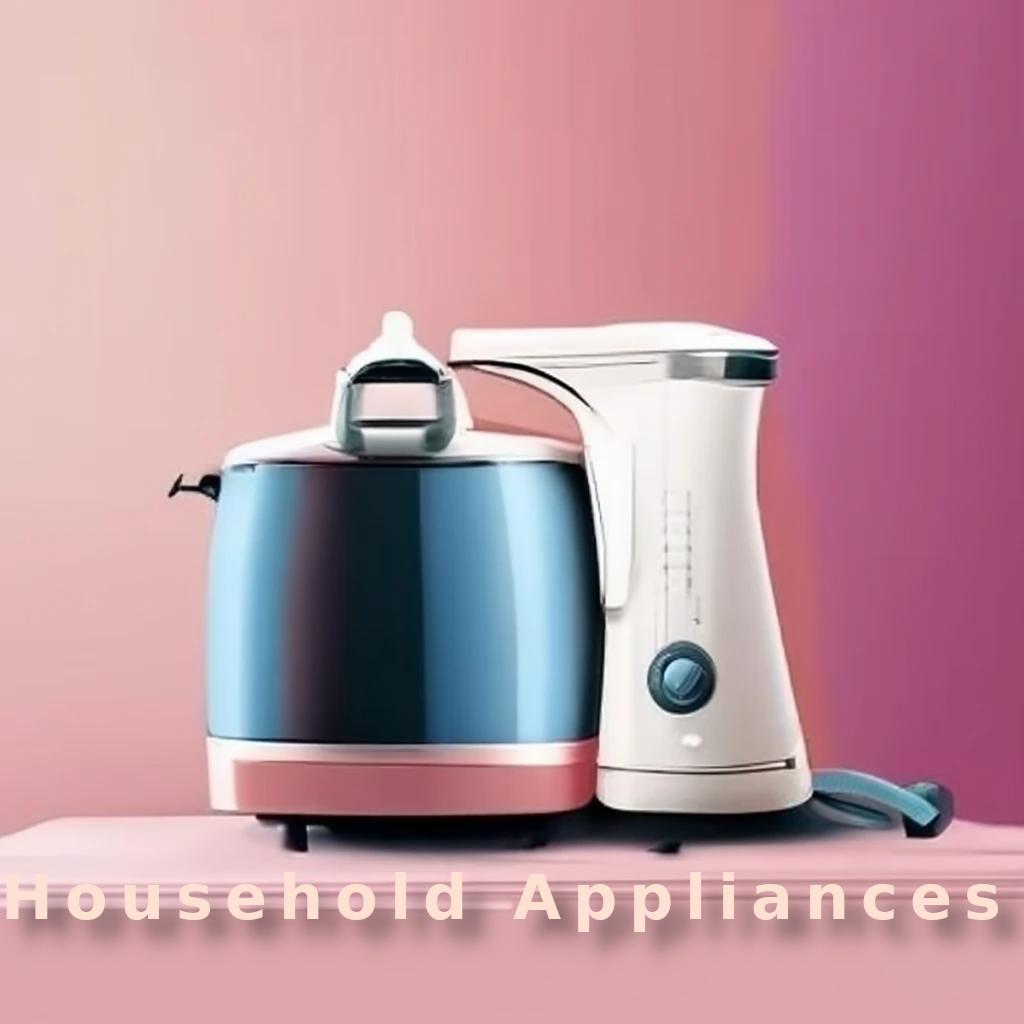


In the modern era, household appliances have evolved beyond mere conveniences to become integral components of our daily lives, simplifying tasks and enhancing overall comfort. From smart refrigerators to energy-efficient washing machines, the world of household appliances is vast and continually evolving. This comprehensive guide offers insightful tips to help you navigate the realm of household appliances, making informed decisions that contribute to efficiency, sustainability, and a seamless home experience.
Research and Choose Wisely:
Before purchasing any household appliance, invest time in researching different brands, models, and customer reviews. Consider factors such as energy efficiency, warranty, and overall performance. Prioritize appliances that align with your needs and contribute to a sustainable home environment.
Embrace Smart Technology:
Smart home appliances are not just a trend; they're a revolution in convenience and efficiency. Consider incorporating smart devices that can be controlled remotely through your smartphone or voice commands. From thermostats to kitchen appliances, smart technology adds a layer of control and automation to your household.
Energy Efficiency Matters:
Opt for energy-efficient appliances to reduce your environmental impact and save on utility bills. Look for products with the Energy Star label, indicating that they meet strict energy efficiency guidelines. Upgrading to energy-efficient appliances is an investment that pays off in the long run.
Regular Maintenance:
Extend the lifespan of your household appliances by adhering to a regular maintenance schedule. Clean filters, check for leaks, and ensure proper ventilation for appliances such as refrigerators, ovens, and air conditioners. Regular maintenance not only improves performance but also prevents potential issues.
Know Your Appliances' Lifecycle:
Understanding the typical lifespan of household appliances allows you to plan for replacements and upgrades more effectively. While some appliances may last for a decade or more, others might require replacement sooner. Knowing when to replace an aging appliance can save you from unexpected breakdowns.
Appliance Placement for Efficiency:
Consider the layout and placement of your appliances to maximize efficiency. For example, placing the refrigerator away from heat sources and ensuring proper ventilation for appliances like the dishwasher can enhance their performance and longevity.
Read and Follow the User Manual:
The user manual is a valuable resource often overlooked. It provides essential information on installation, operation, and troubleshooting. Keep the manuals in an easily accessible location, and refer to them when needed to ensure proper usage and care.
Invest in Quality:
Quality often outweighs quantity when it comes to household appliances. While budget-friendly options might seem appealing, investing in higher-quality appliances can save you money in the long run by reducing the frequency of repairs and replacements.
Water and Energy Conservation:
Appliances such as dishwashers and washing machines consume significant amounts of water and energy. Choose appliances with water-saving and energy-efficient features. Additionally, consider using appliances during off-peak hours to take advantage of lower energy rates.
Stay Informed about Updates:
For smart appliances, staying informed about software updates is crucial. Regularly check for firmware updates to ensure that your smart devices are equipped with the latest features, security patches, and improvements.
Household appliances are electrical or mechanical devices that are used in homes to perform various tasks, such as cooking, cleaning, washing, drying, and more. They are designed to make household chores easier and more efficient, saving time and effort for people.
There are several categories of household appliances, including:
Kitchen Appliances: These appliances are used for cooking, preparing, and storing food. They include refrigerators, freezers, ovens, stoves, microwaves, toasters, blenders, mixers, coffee makers, and more.
Laundry Appliances: These appliances are used for cleaning and drying clothes and other fabrics. They include washing machines, dryers, and ironing boards.
Cleaning Appliances: These appliances are used for cleaning and maintaining the home. They include vacuum cleaners, steam cleaners, and carpet cleaners.
Climate Control Appliances: These appliances are used for heating, cooling, and controlling the air quality in the home. They include air conditioners, heaters, dehumidifiers, and humidifiers.
Personal Care Appliances: These appliances are used for personal grooming and hygiene. They include hair dryers, electric shavers, toothbrushes, and hair straighteners.
Entertainment Appliances: These appliances are used for entertainment purposes, such as watching TV, listening to music, and playing video games. They include TVs, home theater systems, and gaming consoles.
Household appliances have come a long way in terms of innovation over the years, with many new features and technologies that have been introduced to make them more efficient, convenient, and user-friendly. Some of the innovations in household appliances include:
Smart Appliances: Smart appliances are connected to the internet and can be controlled using a smartphone or tablet. They can be programmed to perform tasks automatically and can also provide real-time information on their usage and performance.
Energy Efficiency: Household appliances are becoming more energy-efficient, with features such as auto-shutoff, low-energy modes, and more efficient motors and compressors. This helps reduce energy consumption and save money on utility bills.
Voice Control: Many appliances can now be controlled using voice commands, allowing users to operate them hands-free. This is especially useful for people with mobility issues or disabilities.
Advanced Sensors: Sensors are being used in appliances to detect changes in temperature, humidity, and other environmental factors. This allows the appliance to adjust its settings automatically, ensuring optimal performance.
Improved Designs: Many appliances now feature sleek and modern designs, with a focus on aesthetics as well as functionality. This makes them a more attractive addition to the home.
Integration with Other Technologies: Many appliances can now be integrated with other smart home technologies, such as home security systems, lighting, and thermostats. This allows users to control all aspects of their home from a single device.
The innovations in household appliances are making our lives easier, more convenient, and more efficient, while also helping to reduce energy consumption and save money on utility bills.
Household appliances are typically separated into two main categories: electrical and non-electrical.
Electrical appliances are those that require electricity to function and may include items such as refrigerators, washing machines, dishwashers, air conditioners, vacuum cleaners, and televisions.
Non-electrical appliances, on the other hand, do not require electricity and may include items such as manual can openers, hand mixers, manual juicers, manual meat grinders, and non-electric coffee makers.
It's worth noting that some appliances may have both electrical and non-electrical versions. For example, there are electric coffee makers as well as non-electric ones that use manual drip or percolator methods. Similarly, there are electric can openers as well as manual ones.
Electrical household appliances are more popular by demand than non-electrical ones. This is largely due to the convenience and efficiency that electrical appliances offer. They are often faster, easier to use, and can handle larger loads than their non-electrical counterparts. For example, an electric washing machine can wash a large load of laundry in a fraction of the time it would take to wash by hand or with a manual washing machine.
That being said, there are still many non-electrical appliances that are popular, especially among those who prefer more traditional or eco-friendly options. For example, manual coffee makers and can openers are still used by many people who prefer the simplicity and control they offer. Additionally, non-electric appliances may be preferred in areas where access to electricity is limited or unreliable.
Navigating the world of household appliances requires a blend of technological awareness, practical knowledge, and a commitment to sustainability. By following these tips, you can transform your living space into an efficient and harmonious environment, where household appliances seamlessly integrate into your daily routine, making life more comfortable and enjoyable. Stay informed, embrace innovation, and let your household appliances enhance your lifestyle.
Have a good choice,

We use cookies
We use cookies and other tracking technologies to improve your browsing experience on our website, to show you personalized content and targeted ads, to analyze our website traffic, and to understand where our visitors are coming from. Privacy Policy.